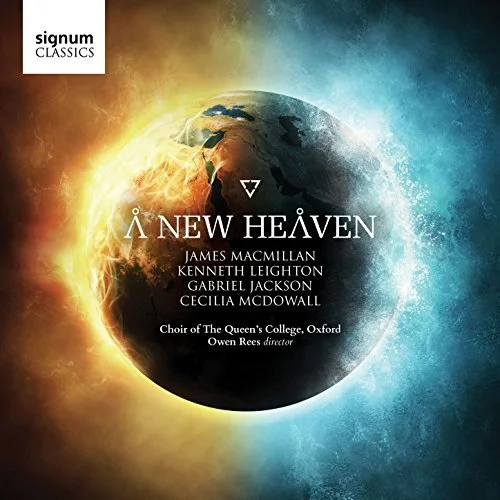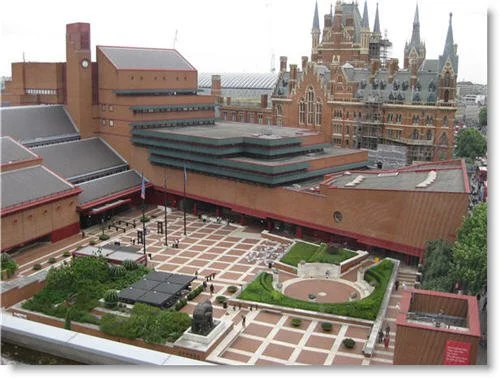
Phillip is a British Composer and Academic. He is Professor of Composition at the University of Aberdeen.
Latest Posts
It’s really nice to finish the year with one of my Christmas carols, I sing of a maiden (2016) being broadcast on BBC Radio 3. The broadcast is of the concert given by The Sixteen at Cadogan Hall on the 18 December and will go out on Radio 3 in Concert on the 23 December at 19.30. It was a wonderful concert (I was there) with a lovely collection of modern and ancient pieces. All the best to everyone for the festive period and for 2026.
The year finishes with a selection of performances around the country, beginning with another performance of The World on Fire (2015) by the Durham University Chamber Choir (05/12). The Cantus Singers of Cambridge perform Alma Redemptoris Mater (2020) on the 13th in Newnham and there are also performances of the Matins Responsory (2013) and God Be in My Head (2025). The month finishes with a trio of perfromances of I sing of a maiden (2016) by The Sixteen at Cadogan Hall and Trinity College, Cambridge (17-19/12), the first of which will be broadcast on BBC Radio 3 on the 23rd.
In Autumn 2015, I was very lucky to have three new works premiered across the country, for three different groups for three very different occasions. The first was on the 22 October where a community choir of local singers gave the first performance of my ‘fantasy’ for choir and tubular bells, By Reason of Darkness in the fading light and seagull calls of King’s College Quad to open that year’s SOUND festival. The second (on the 21 November) was my oratorio, Noah’s Fire for baritone, choir, children’s voices and orchestra written for the 70th anniversary of the Chester Music Society and performed to a full house (and terrified composer) in the city’s Cathedral. The final piece was the shortest, most conventional and least taxing to compose, The World on Fire, a four-minute work for The Choir of the Queen’s College, Oxford, for a forthcoming CD release. It will maybe come as no surprise that two of these works have yet to have a second performance (though I’m always hopeful), but one of them has had over fifty performances and continues to be my most performed and most well-travelled composition. That piece is, of course, The World on Fire.
It is promising to be an exciting Autumn with many performances taking place on both sides of the Atlantic. Concerts include the Levens Choir touring the Three Partsongs (2012) around Dorset, performances of The World on Fire (2015) in Ipswich and Moscow (Idaho, not Russia), and a fantastic programme in Guildford that includes Ave Maria, mater Dei (2017) and a rare performance of The Hazel Wood (2012) with Onyx Brass. There are premieres of my new Prelude & Galliard (2025) in Harvard and a new Advent piece Awake Out of Sleep (2025) in Cambridge. Perhaps the highlight is the 01 November where I will be in Canada for the first performance of Missa Omnium Sanctorum (2025) written for the 50th anniversary of the founding of the Toronto Oratory.
Over the past two years I’ve gradually been ‘revising’ (I’ll unpack that word shortly) my whole catalogue of works, something that began with looking at the odd piece occasionally when I wasn’t busy with other projects and then accelerated to a fully blown appraisal of my work this summer. Much of this was spurred on by a request from the British Library for my scores to be in their collection and this turned what had been a piecemeal approach into something more concerted and wide-ranging. The thought of one’s works being in a repository for the rest of time really concentrates the mind in terms of how and what you want to be represented, especially when you might have shuffled off this mortal coil…
It was really nice to be asked to submit all of my scores to the British Library recently in recognition that self-published music now plays a substantial part in music-making in the United Kingdom. In total, 102 pieces were sent along, from the earliest, the Four Tonal Songs from 1996 to recent pieces such as God Be in My Head and the Fifth Service from this year. Its been fasciating cataloguing, revisiting and revising works (as well as withdrawing a few…) and I’ll write a blog about this soon going into the process in more detail.

Phillip Cooke is the author of the first scholarly study of MacMillan's life, work and aesthetic.
Known for his orchestral, operatic and choral works, James MacMillan appeals across the spectrum of contemporary music making. From his beginnings in rural Ayrshire and his early work with Sir Peter Maxwell Davies, through the international breakthrough success and his current position as one of the most prominent British composers of his generation, this book scrutinises MacMillan's compositional influences over time. It looks closely at his most significant works, setting them in a wider context defined by contemporary composition, culture and the arts in general.
Compositions
‘The Cooke is remarkable…in the background you get a flickering of candles, a halo of light, in the middle is a male choir adoring the Virgin.’
— BBC Radio 3, Record Review
‘Phillip Cooke’s…Ave Maria, mater Dei is enticingly ethereal thanks to a pair of off-stage trebles intensifying its incantatory allure.’
— BBC Music Magazine
‘Cooke is able to compose distinctive settings of familiar liturgical texts with excellent performances and some beautifully sustained pianissimos.’
— The Gramophone
Recent Compositions
This short Advent antiphon aims to capture some of the anticipation and drama of the season and the coming of the Lord. The piece is essentially in three ‘waves’ each becoming more significant until the final line of ‘let us on put on the armour of light’ heralds a huge organ climax full or colour and fulfilment.
The Pavan & Galliard (in modo semplice) are (as the title suggests) simple pieces for a small organ, or alternative. In writing the work I became reacquainted with Herbert Howells’s Lambert’s Clavichord, his set of pieces largely written in 1927 which were in many ways a love-letter to the Tudor period and the composers flourishing at that time. Amongst my favourites in the set are the modal melancholy of ‘De La Mare’s Pavane’ and the wild abandon of ‘Sir Hugh’s Galliard’. In no way are my pieces a pastiche of Howells, but rather acknowledging the inspiration of his work, which in turn acknowledges that of his Tudor forebears. I thought it made for a satisfying homage to English music that speaks to me above all others.
The Missa Omnium Sanctorum is the first full setting (i.e. including the ‘Credo’) of the Mass that I have made and one of my largest unaccompanied choral works to date. The piece alternates between a sombre, shadowy F minor and a brighter, iridescent modal A major – the former for more prayerful and supplicative material, the latter for the more celebratory moments of praise and benediction. The two harmonic areas coincide and colour each other throughout and the overall mood of the work is reflective but benevolent.
The collection of pieces that comprises the Inventions and Sinfonias have resulted in my longest piece to date and the most concentrated spell of focussing on one instrument since my Transfiguration project for piano (2021-22). The work takes Bach’s monumental work of the same title as its inspiration, though the great master’s influence on the work is more formal and structural than anything musical or artistic. Bach’s work was designed for his students to learn two and three-part contrapuntal keyboard music in a creative and interesting way, fashioned from his own style of composition. Bach composed the two-part (Inventions) and three-part (Sinfonias) in ascending keys from those widely used in the period (eight major and seven minor keys). These two facets (the pedagogical and the tonal) are preserved in my Inventions and Sinfonias, mirroring the key structure of Bach’s and aiming these pieces at good players still on their instrumental learning journey.
My fifth setting of the Evening Service is the most concentrated to date, not only in terms of the reduced performing means, but also the material and themes used within. The mood of the work is one of sustained gentleness, but with moments of passion and introspection as befits these well-known texts.
There have been many simple, prayerful settings of these heartfelt words and my offering is in a similar vein with more than a nod to the pieces by Walford Davies, Howells and Rutter.
The second set of Three Partsongs, continues my interest in the music and fashions of the late nineteenth and early twentieth centuries that I have explored in many works over the past two decades, the most similar being the first set of partsongs from 2008-12. Like their predecessors, the second set of Three Partsongs are simple settings for SATB unaccompanied choir, taking their influence from the Romantic idea of the partsong as a simple, homophonic, melody dominated piece often taking its inspiration from nature and other Romantic notions.
Lumen in Umbra is a sustained, atmospheric piece taking two lines of text relating to light and darkness and creating a slowly changing tableau that centres around a high-pitched drone from tuned wine glasses. The light in the piece changes from moment to moment, sometimes bright and coruscating, sometimes wan and distant.










![Fifth Service [Carlisle Cathedral] (2025)](https://images.squarespace-cdn.com/content/v1/5e4be93058d7396dafa702d0/1745068719404-KNAGGCS476XG90ES44FI/unsplash-image-eo-egjeL9t4.jpg)

![Three Partsongs [Second Set] (2018-24)](https://images.squarespace-cdn.com/content/v1/5e4be93058d7396dafa702d0/1733311631660-F4D6D5GHDQQDRE1SQXSU/mitchell-nijman-KlG4VazSoGk-unsplash.jpg)
